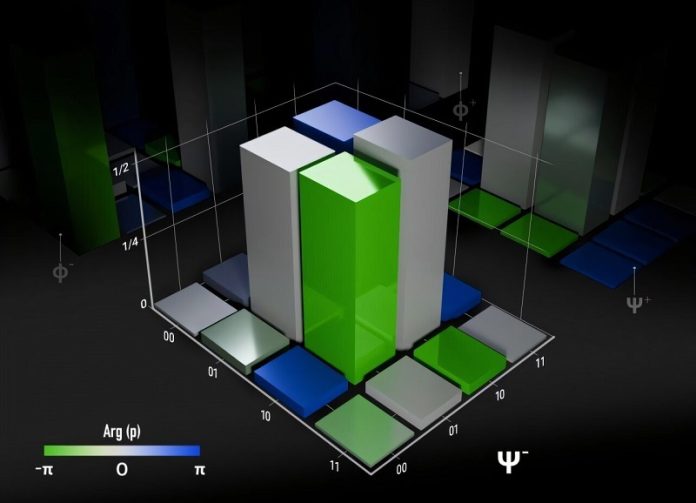
Researchers at the Oak Ridge National Laboratory (ORNL) have developed a first-of-its-kind quantum gate that could make quantum communication more reliable.
This discovery is an important step toward building a better quantum internet, which could one day transform how we share and protect information.
What is a quantum gate?
A quantum gate is a tool that controls and manipulates quantum information. In this study, led by ORNL’s Hsuan-Hao Lu, scientists created a quantum gate that works between two properties of a photon: polarization and frequency.
Photons are tiny particles of light that carry information in quantum networks. They have multiple properties, known as degrees of freedom, that can be controlled to store or send data. However, when photons travel through fiber-optic cables, their properties can change due to environmental disturbances, introducing errors in communication.
The researchers used a technique called hyperentanglement, which means entangling multiple properties of a photon at the same time. This approach could help reduce errors in quantum communication, making it more stable and reliable.
Lu explained this idea with a simple example:
“Imagine a photon is polarized horizontally, representing a communication bit of zero. As it moves through fiber, its polarization may shift randomly, causing mistakes. But with our new method and hyperentanglement, we can reduce these errors and improve communication.”
This breakthrough could help build a more robust quantum network in the future. The ORNL team plans to test their new technology on their own quantum network.
This research aligns with the work of another ORNL scientist, Alex Miloshevsky, who recently published a study on creating broadband polarization-entangled photons using CMOS technology. Both studies appeared in the journal Optica Quantum.
By improving quantum communication, these discoveries bring us closer to a future quantum internet, where data can be transmitted faster and more securely than ever before.
Source: ORNL.



